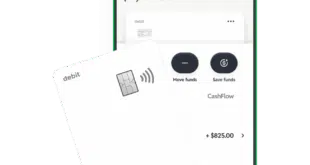While the Consumer Financial Protection Bureau is being sued over its data-privacy rule, merchants remain optimistic the regulation will help them reduce the impact of swipe fees by making account-to-account payments widely available at the point of sale.
The key is open banking, which paves the way to developing payment options that do not depend on the Visa and Mastercard network rails, says Stephanie A. Martz, chief administrative officer and general counsel for the National Retail Federation.
The CFPB’s personal financial data rights rule, released earlier this week, requires financial institutions, credit card issuers, and other financial providers to share data at a consumer’s direction with companies offering competing products through open banking. That same day, the rule was challenged in court by the Bank Policy Institute and the Kentucky Bankers Association.

“Retailers need to pay close attention to developments with open banking and the potential it offers as an alternative to the costly way payments are currently processed,” Martz says by email. “Open banking could cut out these middlemen and create competition that would benefit small businesses and consumers alike. These new rules are an important step toward making that happen.”
Swipe fees, on cards are paid by merchants and are typically 2% to 4% of the transaction. In comparison, fees for pay-by-bank transactions are substantially lower. “Pay-by-bank is free from fees unless banks decide to charge for app use, or an app charges a fee, either on a subscription or on a per-transaction basis,” Martz says.
Given the lower cost of pay by bank, the potential exists for this type of payment to eat into a substantial portion of Visa’s and Mastercard’s network volume, Martz adds. Both firms in recent years have acquired open-banking platforms in anticipation of pay-by-bank’s development.
For that impact to come about, pay-by-bank applications must first become more widely available—a development the CFPB rule paves the way for. “The requirement that banks make financial information available to customers is going to enable app developers that meet certain security and other standards to develop uses for this data – personal budgeting analysis, cash transfers, and payments,” Martz says. “Banks that want to compete for customers are likely to adopt new and innovative user interfaces that include payments, because for all but the biggest banks, banks’ main source of revenue is accountholders, and they want more accountholders.”
Pay-by-bank applications will also help “smaller upstart banks” differentiate themselves in the market by providing them with “a different, more agile product,” Martz adds.
Such solutions are already gaining traction. Some large banks, such as Chase, provide pay-by-bank applications to merchants, and Mastercard offers the service to merchants and payment-service providers, says Stewart Watterson, a strategic advisor for Datos Insights.
“We fully expect that account-to-account or pay-by-bank use cases to be an early beneficiary of the wider participation in open banking that adoption [of the CFPB’s rule] will spark, Watterson says by email. “We will see many more entrants to this market in the coming year.”
One reason to expect that flood of entrants is that many merchants “will be quick” to adopt the payment method in an effort “to avoid paying their piece of card-network interchange fees,” Watterson adds.
The unknown factor, however, is how likely consumers are to gravitate to pay by bank. “Card is king, and merchants will most likely need to incent and push consumers to switch from using a debit or credit card to pay for goods and services,” Watterson adds. “They will need to place a foot firmly on the third rail of marketing, changing consumer behavior.”
Effecting that change won’t be easy, as credit and debit cards are ubiquitous payment options for consumers and merchants.
“Merchants love the existing payment system, they just want it to cost them less,” Eric Grover, principal of Intrepid Ventures says by email. “Payment networks enabling secure, convenient, near-frictionless payments anywhere, anytime, create enormous value for consumers, and for banks, fintechs, and merchants. Fees fund innovation and a range of services consumers and merchants value.”
Another challenge that could hinder widespread adoption of pay by bank at the point of sale is that it remains a burgeoning technology. “Payment networks have little value unless and until they have a critical mass of consumers and businesses who want to pay with them, and to accept them, and pay-by-bank solutions have neither,” Grover says. “For consumers, the existing system isn’t broken, but works extraordinarily well.”





